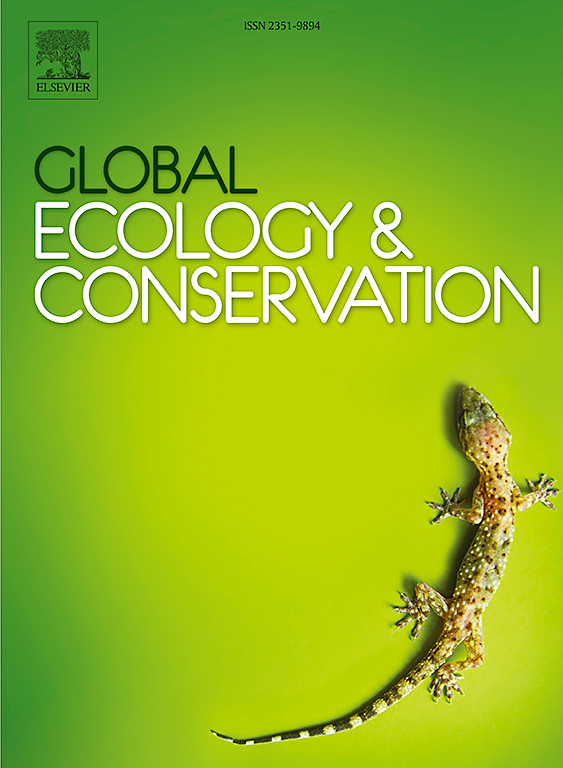古代的入侵塑造了加利福尼亚海峡岛上的一种宗教物种——岛橡树的进化史。
IF 3.4
2区 环境科学与生态学
Q1 BIODIVERSITY CONSERVATION
引用次数: 0
摘要
杂交是植物间的一种常见现象,它可以导致中性或有益基因座的交换,从而可能导致适应性基因渗入。通常很难知道当代物种的遗传组成是最近杂交的结果还是反映了古代的基因渗入,但是对一个与同类长期分离的物种的研究提供了研究古代基因渗入的机会。在这里,我们研究了稀有和濒危的岛栎(Quercus tomentella),它是加利福尼亚海峡群岛上的宗教,但曾经与大陆上的峡谷活橡树(Q. chrysolepis)共生。最近的研究表明,当代岛屿橡树种群中有许多个体在两个物种之间拥有50 %的共同祖先,但在任何岛屿上,非混合的峡谷活橡树个体都很少。这项研究的目的是评估岛屿橡树的遗传组成在多大程度上反映了至少260万至700万年前在大陆上同域的峡谷活橡树的古老渗入。我们使用进化人口模型来确定瓶颈事件的存在和时间,以及岛屿橡树和峡谷活橡树之间古代渗透的程度和时间。在它们的进化史中发现了双向基因流动,这表明杂交不是最近的发展,可能已经将适应性等位基因引入到今天仍然存在的古代种群中。本文章由计算机程序翻译,如有差异,请以英文原文为准。
Ancient introgression shapes the evolutionary history of a California Channel Island relictual species, island oak (Quercus tomentella)
Hybridization, a common phenomenon among plants, can result in the exchange of neutral or beneficial genetic loci, potentially leading to adaptive introgression. It is often difficult to know whether the genetic composition of contemporary species is the result of recent hybridization or reflects ancient introgression, but examination of a species long separated from a congener provides the opportunity to study ancient introgression. Here, we investigate the rare and endangered island oak (Quercus tomentella) that is relictual on the California Channel Islands but was once sympatric with canyon live oak (Q. chrysolepis) on the mainland. Recent studies have shown that contemporary populations of island oak include many individuals with essentially 50 % shared co-ancestry between the two species, but very few individuals of non-admixed canyon live oak on any island. The goal of this study is to assess the extent to which the genetic composition of island oak reflects ancient introgression with canyon live oak when they were sympatric on the mainland at least 2.6–7 million years ago. We used evolutionary demographic models that identify the presence and timing of bottleneck events and the extent and timing of ancient introgression between island oak and canyon live oak. Bidirectional gene flow was found throughout their evolutionary history, suggesting that hybridization is not a recent development and may have introduced adaptive alleles into ancient populations that still persist today.
求助全文
通过发布文献求助,成功后即可免费获取论文全文。
去求助
来源期刊

Global Ecology and Conservation
Agricultural and Biological Sciences-Ecology, Evolution, Behavior and Systematics
CiteScore
8.10
自引率
5.00%
发文量
346
审稿时长
83 days
期刊介绍:
Global Ecology and Conservation is a peer-reviewed, open-access journal covering all sub-disciplines of ecological and conservation science: from theory to practice, from molecules to ecosystems, from regional to global. The fields covered include: organismal, population, community, and ecosystem ecology; physiological, evolutionary, and behavioral ecology; and conservation science.
 求助内容:
求助内容: 应助结果提醒方式:
应助结果提醒方式:


